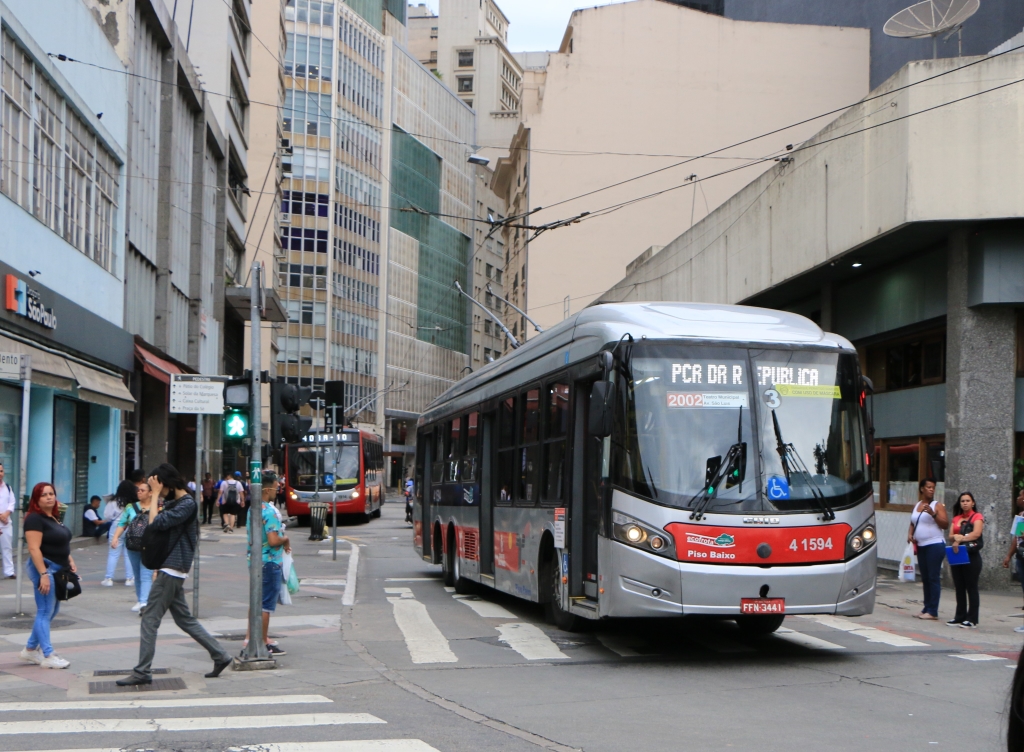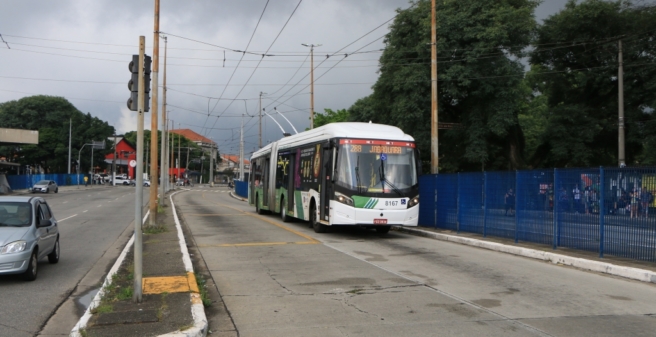
The Brazilian megapolis São Paulo has a population of more than 20 million inhabitants in the metropolitan region. Backbone of the public transport system in the city is the five-line metro system which is supplemented by a number of electric suburban train services – sometimes similar to metro-standard – and a monorail. However, there a still districts and suburbs which have to exclusively rely on the buses.
An extensive network of physically segregated bus lanes has been established along many arterial roads in all areas of the city, providing BRT (Bus Rapid Transit) services with a mix of 2-axle and 3-axle rigid buses plus 3-axle and 4-axle articulated buses. The latter are 23 metre long and offer an impressive capacity on the heavily used routes of the network. The length of segregated bus lines for the BRT is approximately 127 km in total, and more are yet to come.
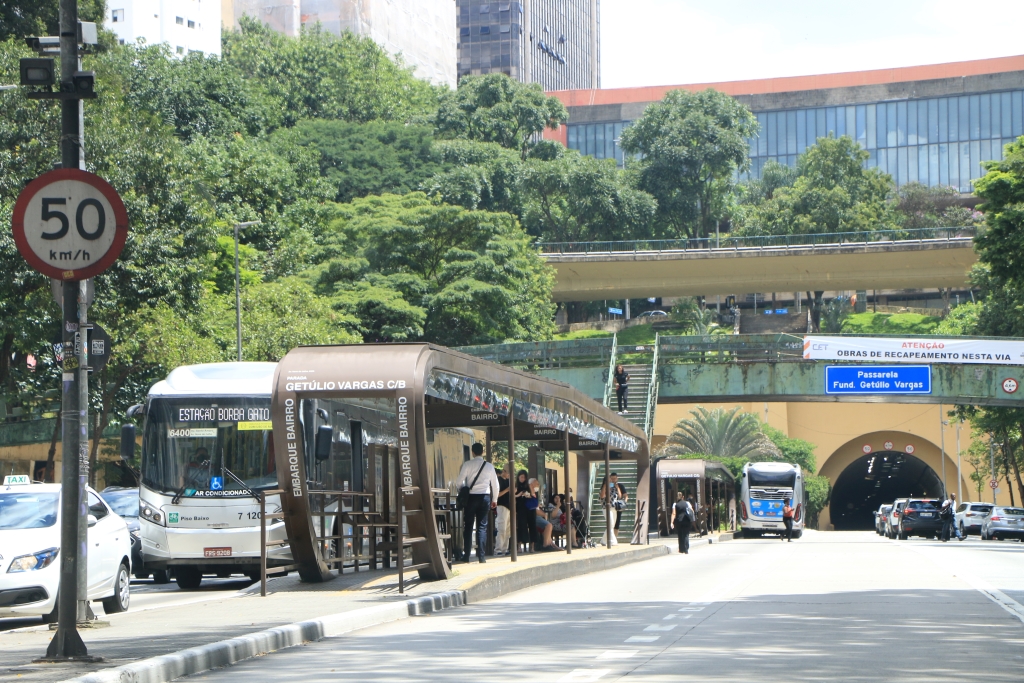
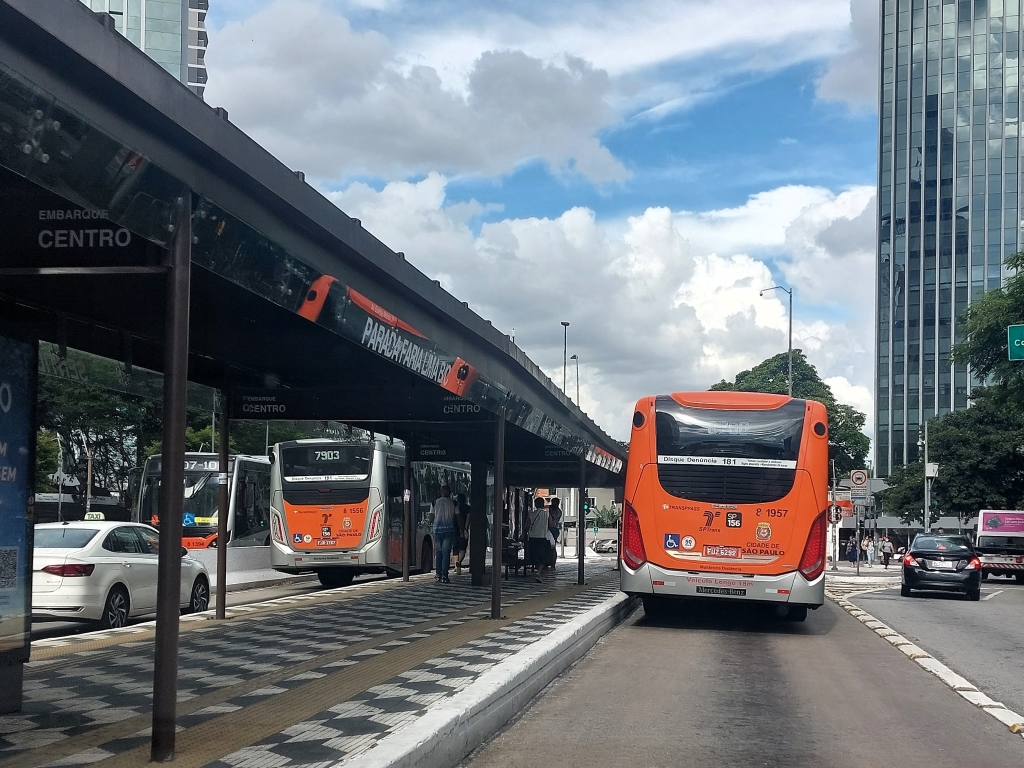
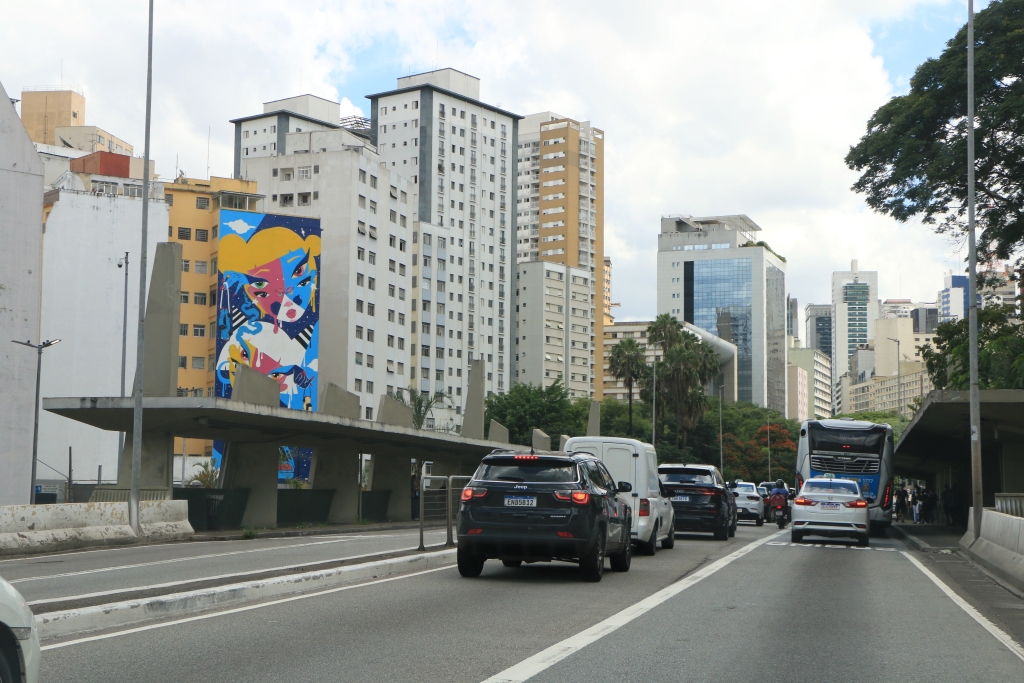
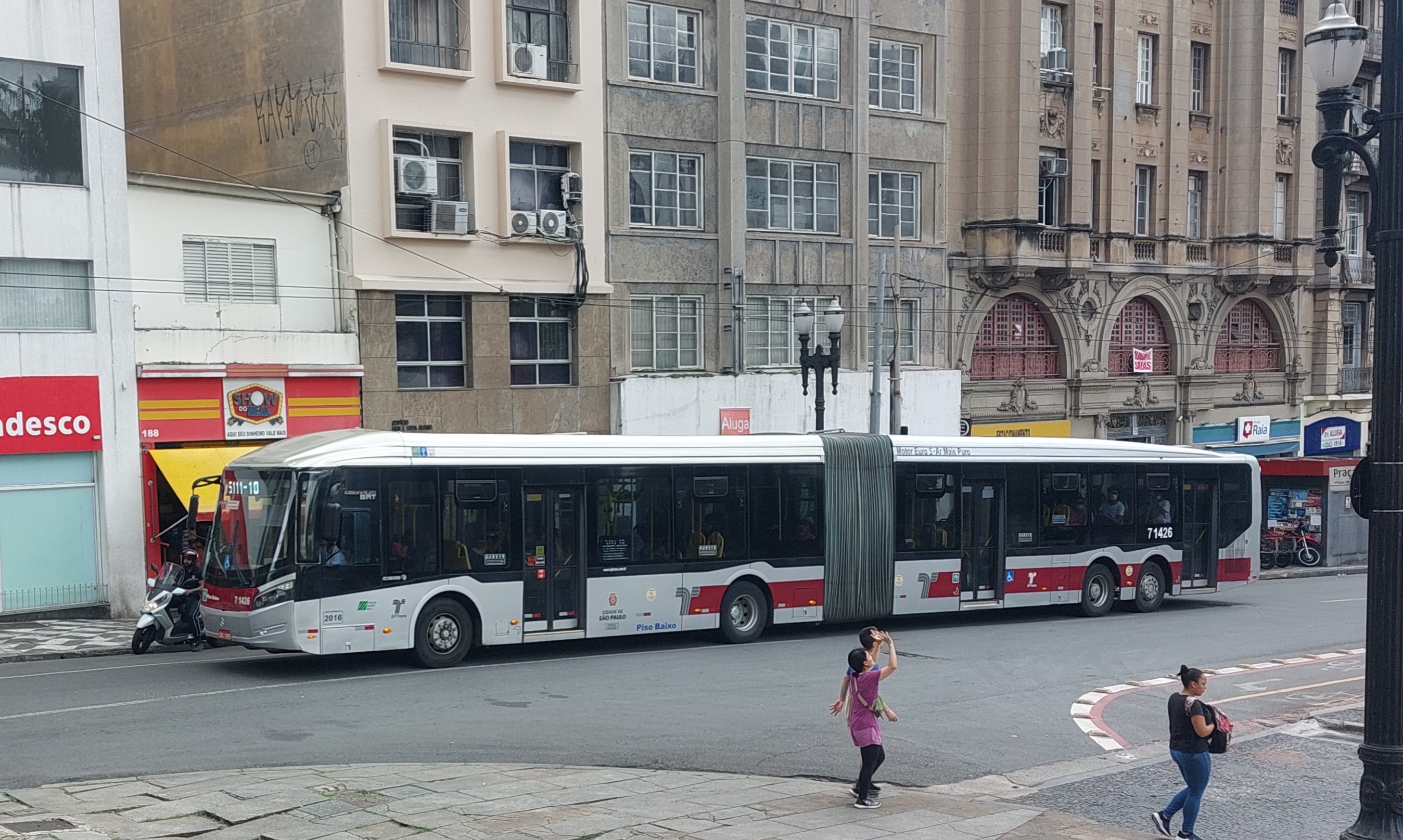
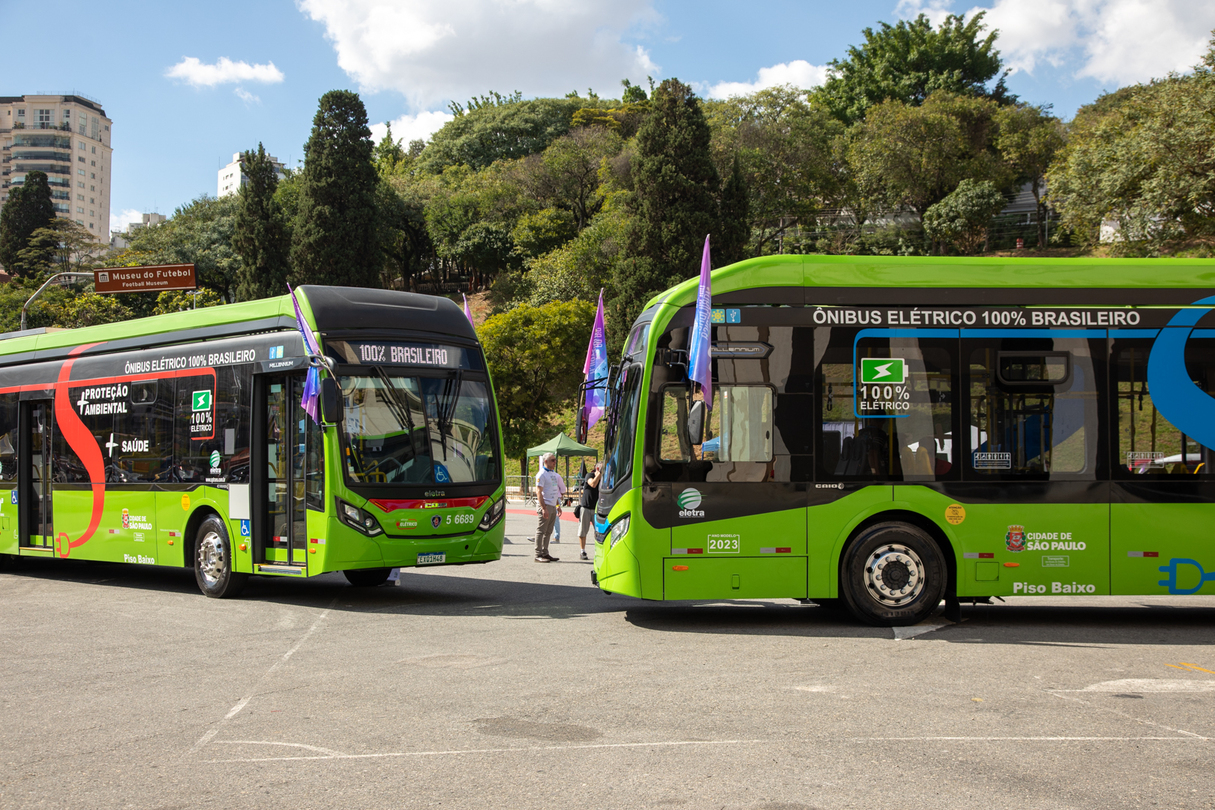
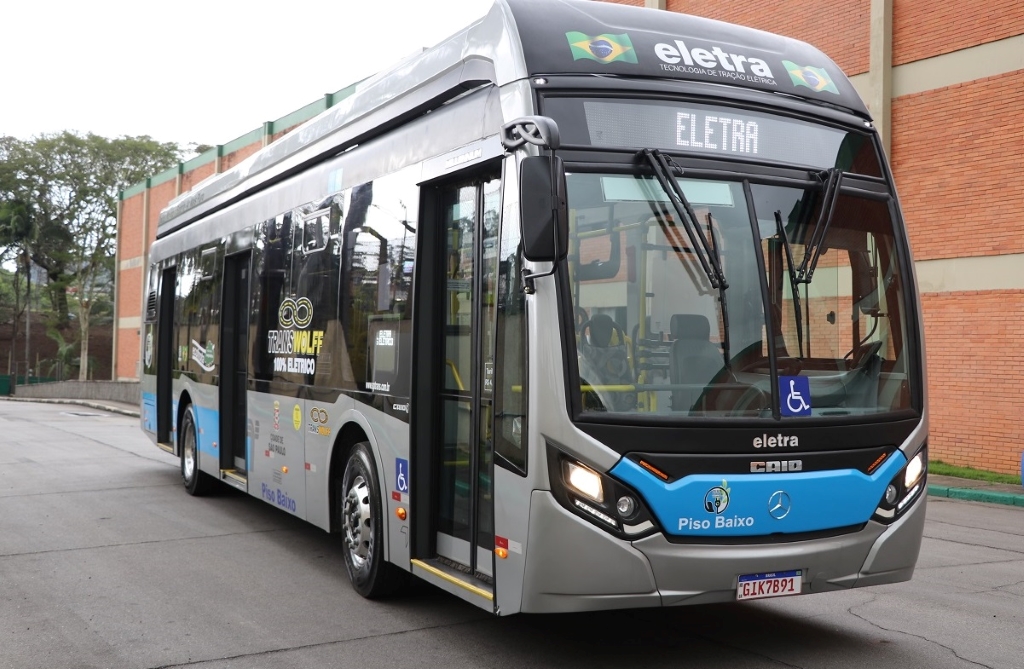
The worldwide trend towards electric mobility has not been overlooked in São Paulo, and programs for a large-scale introduction of electric buses are developed. A modest number of about 50 battery e-buses is already in service, the operator Transwolff purchased a number of Mercedes-Benz/CAIO/Eletra vehicles since late 2022.
Well prepared
However, the Greater São Paulo is in the privileged situation to already have two pure-electric bus systems operation for decades – both operated by some 290 modern, low-floor trolleybuses today. The municipal system owned by “SP Trans” currently operates 10 routes, while the regional government via the public company EMTU is the owner of the infrastructure of a 33 km long system (66km double wiring) in the southern and south-eastern suburban areas of the metropolitan region operated by the private company Metra. This system is by any means an almost ideal example how BRT and the electric trolleybus fit perfectly together, because the several different, mostly overlapping routes along the so-called ABD corridor between Jabaquara, Ferrazópolis and São Mateus provide a fast, smooth ride along the physically segregated bus lanes. There are interchange points to the metro, the suburban train and the monorail at several point of the network, as well as to the SP Trans trolleybus system at São Mateus.
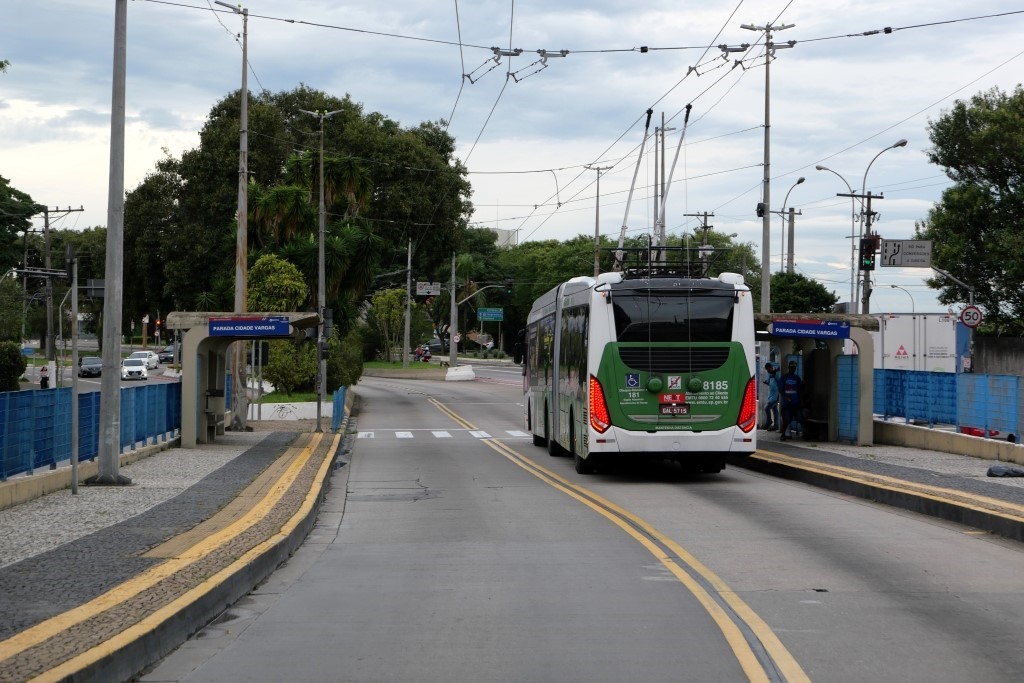
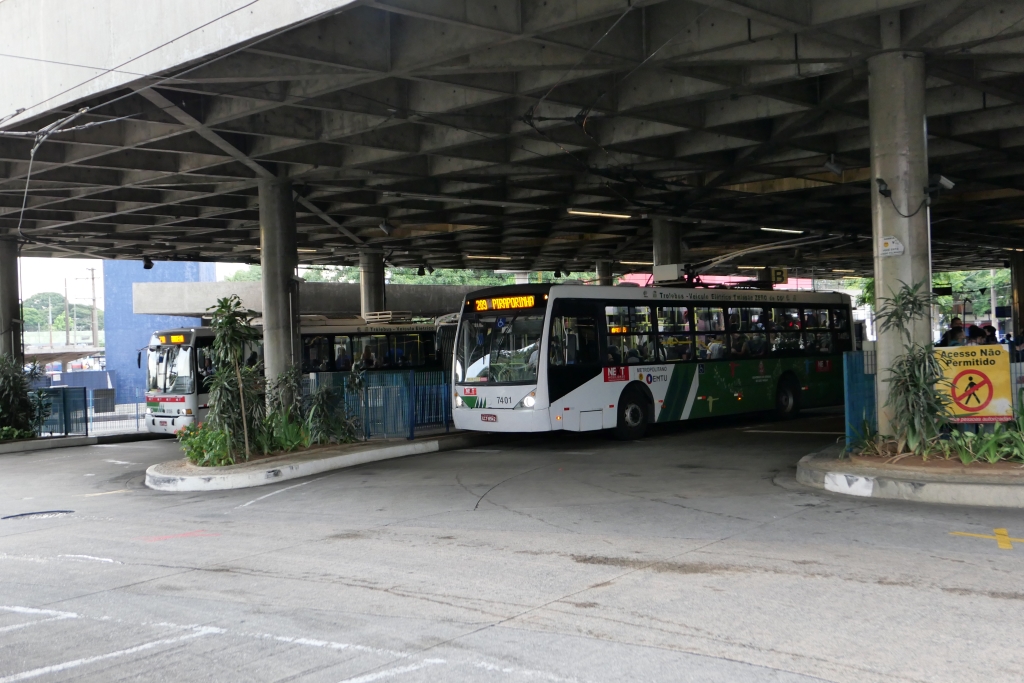
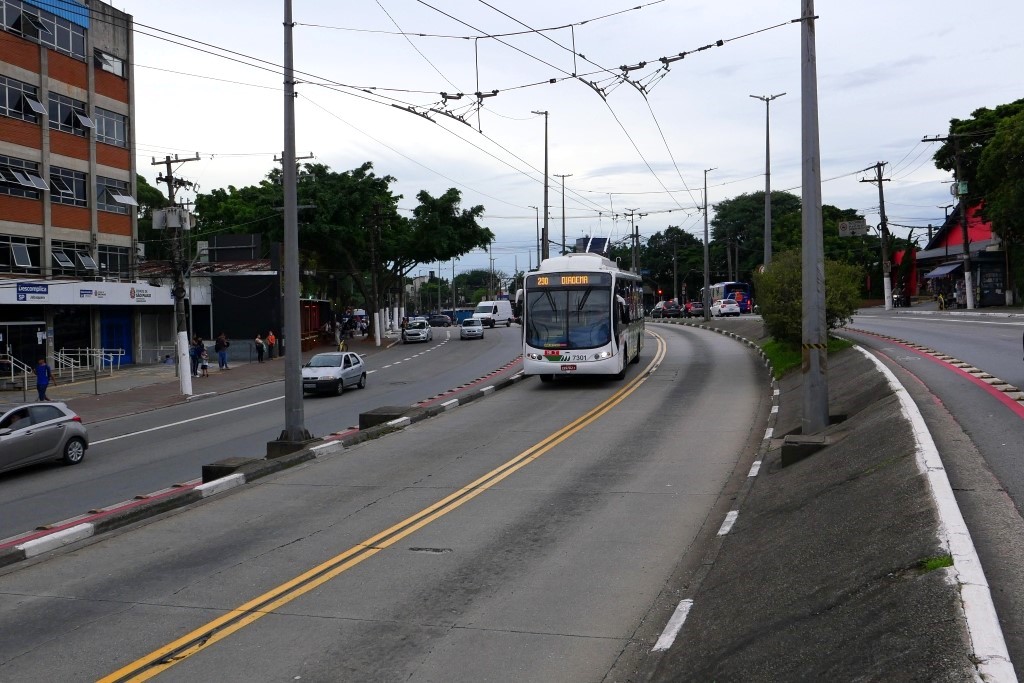
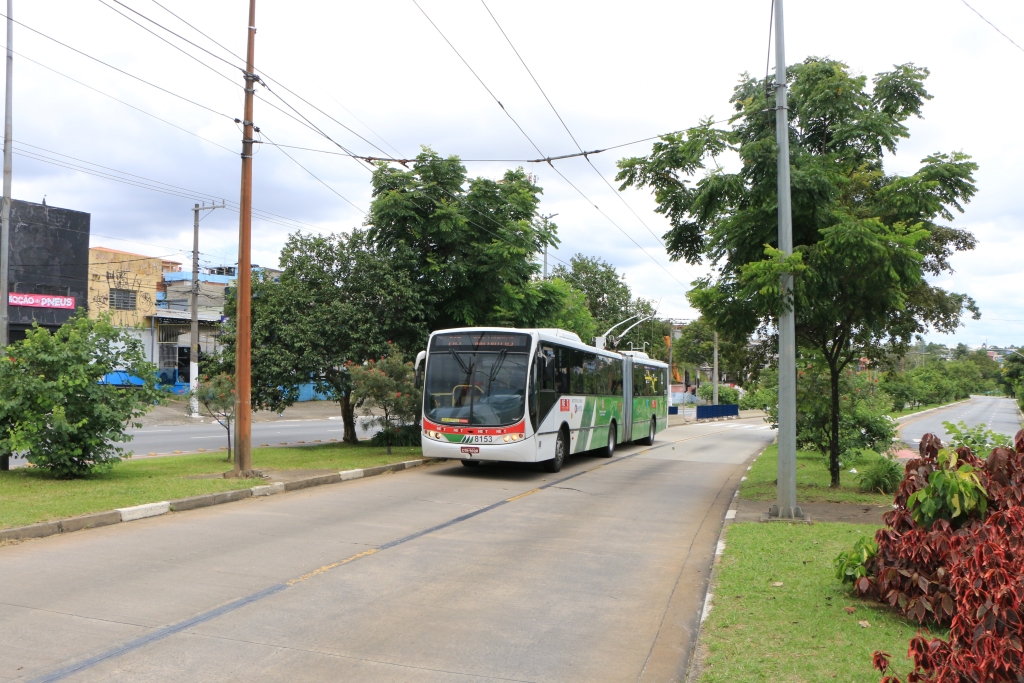
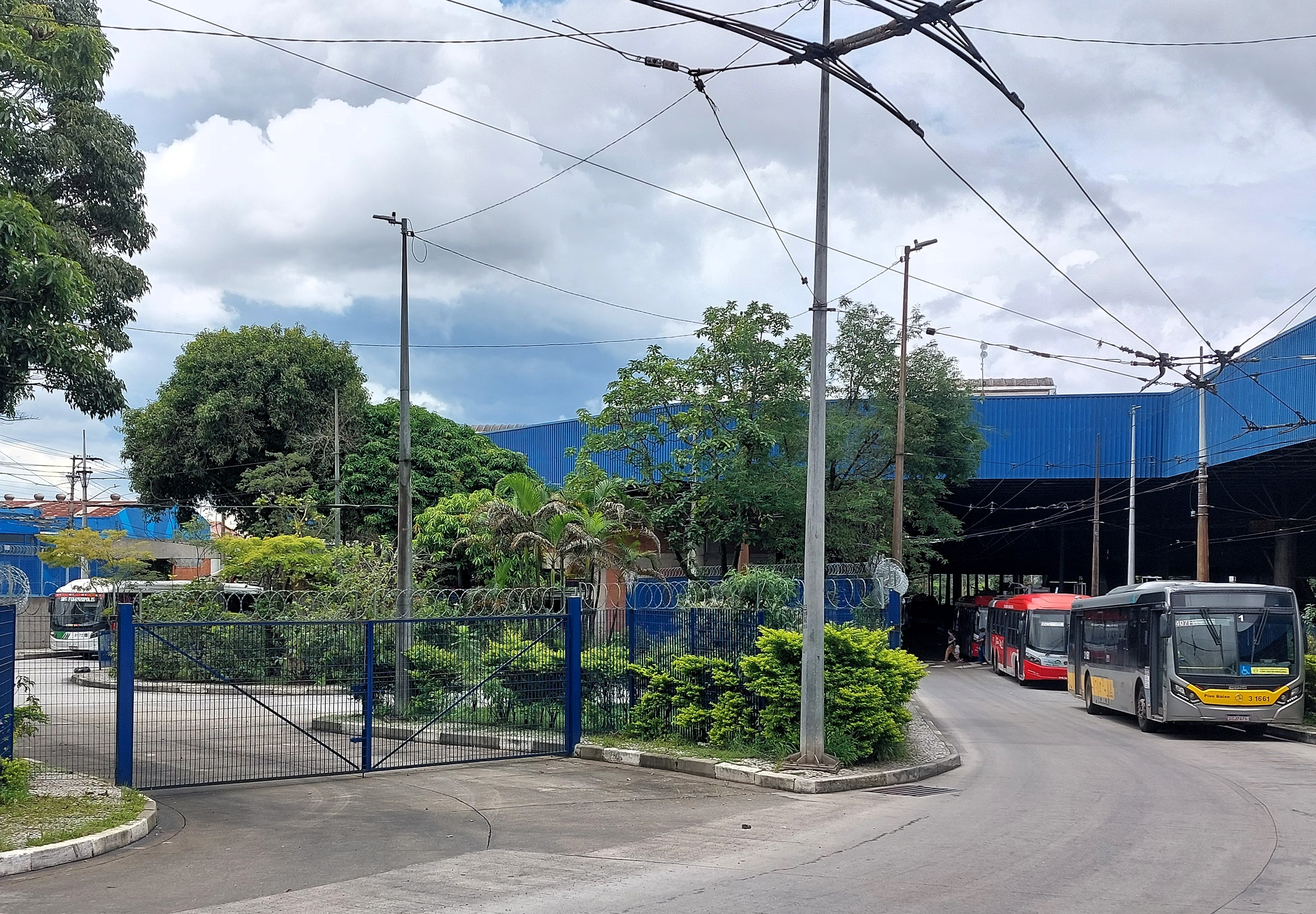
A mixed fleet of rigid and articulated trolleybuses operate over several different lines along the corridor, however, usually in mixed operation with diesel bus, for the simple reason that the trolleybus fleet is by far not large enough to cover all the services. Metra’s buses and trolleybuses are usually heavily used and often overcrowded – as most of the other public transport services in the area.
More intensive use of trolleybuses to speed electrification
The SP Trans system once was much larger than today, however, based on some short-sighted political decision some 20 years ago, the network shrunk down to basically half of its previous size. 198 low-floor, two- and three-axle trolleybuses built between 2008 and 2014 operate 10 lines along a network of 201 km of wires (as single line). The power supply system and the overhead has been almost entirely refurbished in the last 10 years. An additional route using existing overhead lines is planned (between Terminal Penha and the city centre), since the new contract was signed, in the end of 2020, but this did not happen, yet.
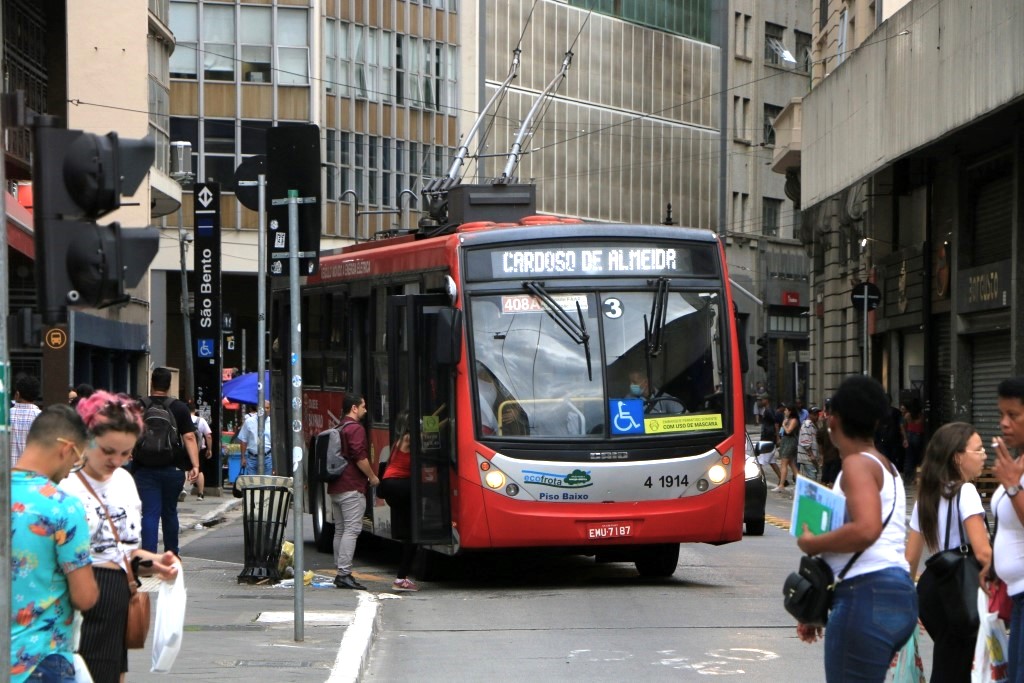
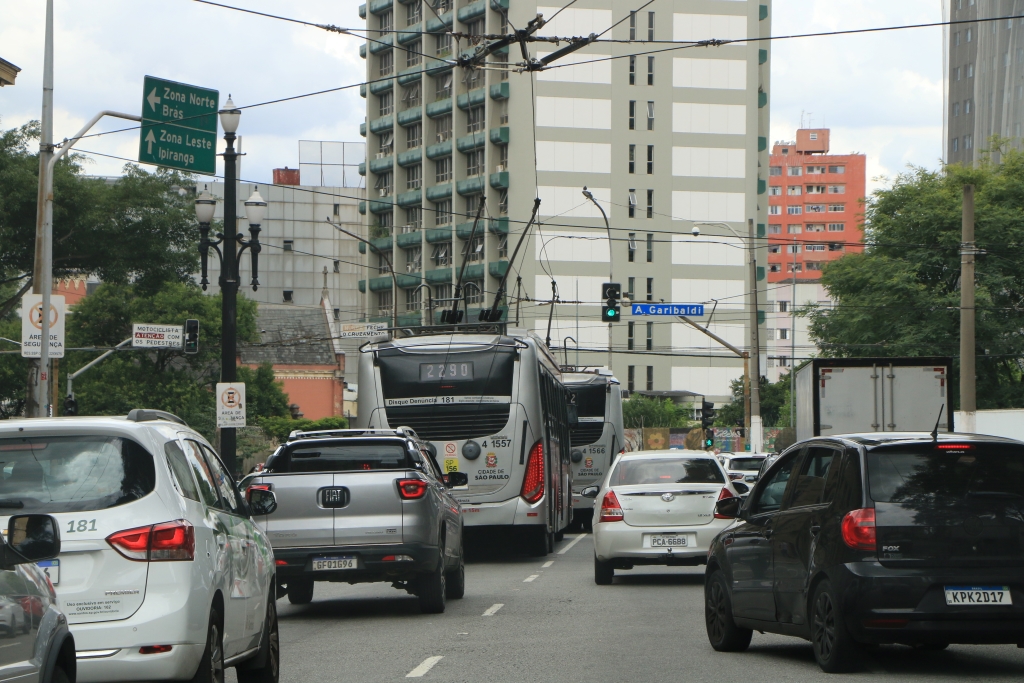
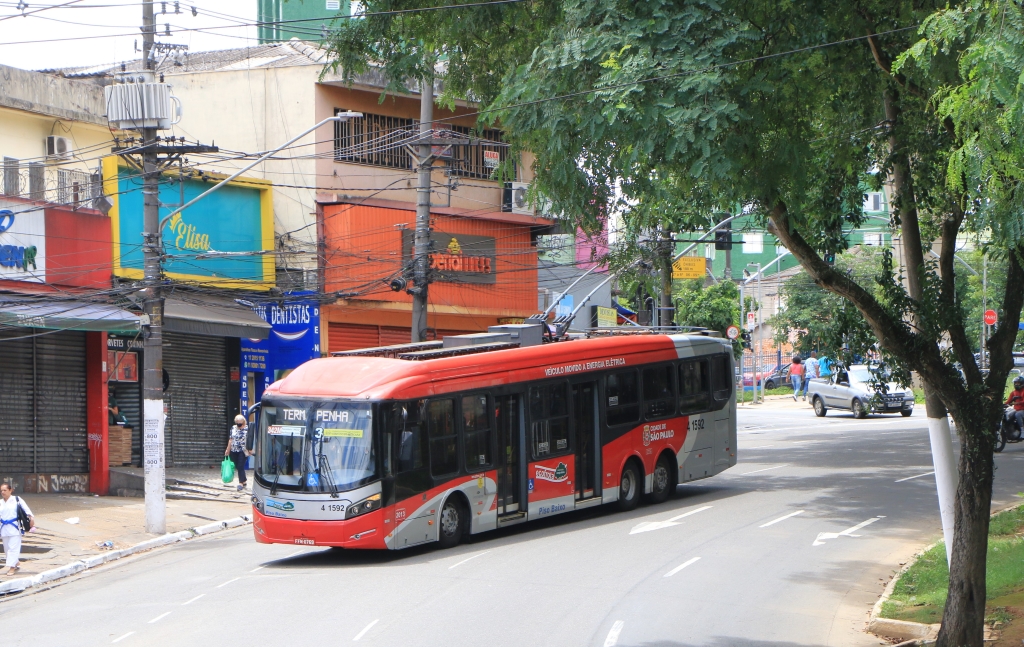
Both the SP Trans system as well as the ABD network give the São Paulo the unique to make use of the existing overhead network and enlarge the possibilities to use it by state-of -the-art battery trolleybuses. By this means the use of the network can be much intensified and more lines which share part of their route with the trolleybus lines can be easily operated in fully-electric mode: In-Motion-Charging would be the operation of choice.
The city council recently announced the purchase of 1,100 battery-electric buses this year, plus another 1,200 next year. In the entire Greater São Paulo metropolitan area more than 20,000 buses currently operate in public service. It seems that the current focus is the purchase of pure battery buses instead In-Motion trolleybuses, in São Paulo, in spite of several studies presented by different experts to SPTrans technical personnel.
The Ambiental Company, the trolleybus operator in São Paulo, acquired some 40 battery buses, from ELETRA, in June 2023, to replace a number of diesel buses, which operate along the trolleybuses. The actual trolleybus fleet should be replaced from 2024 to 2028, but there is a period of three additional years. Experts are providing studies and background information in order to convince SPTrans and the operator to purchase In-Motion trolleybuses, instead battery buses.
Brazilian manufacturer ELETRA is currently producing the first In-Motion trolleybus prototype in June 2023, to be used in the new METRA BRT corridor. It is a 21 metres articulated trolleybus and testing on both São Paulo systems could help the evaluation of the efficiency of this mode operation.
For the EMTU-Metra system, the purchasing of about 80 In-Motion trolleybuses, made locally by ELETRA, is planned to open a new 11 km long BRT corridor, from São Bernardo do Campo to the southern Sacomã Terminus, in São Paulo. There will be wiring only in one way, to São Bernardo do Campo and the return will be made by battery mode.
In addition, new trolleybuses to replace old ones, in METRA system, are also expected, probably starting at the end of 2024.
Conclusion
The electrification of São Paulo’s bus network will take quite some years to be completed – a period of 15 years is realistic. Battery buses will definitely play an important part in this process which require not only the purchase of new vehicles but of course the adaption of the infrastructure as well. But it’s most evident that the use of the existing trolleybus network and it’s upgrading by means of state-of-the-art battery trolleybuses for In-Motion-Charging will bring a lot of additional benefits and can only help to speed up the electrification process – in the best interest of reaching a more sustainable, environmental-friendly way of public transport in this densely populated area.
Thank you very much for valuable contributions to the text by Jorge F. Moraes!
